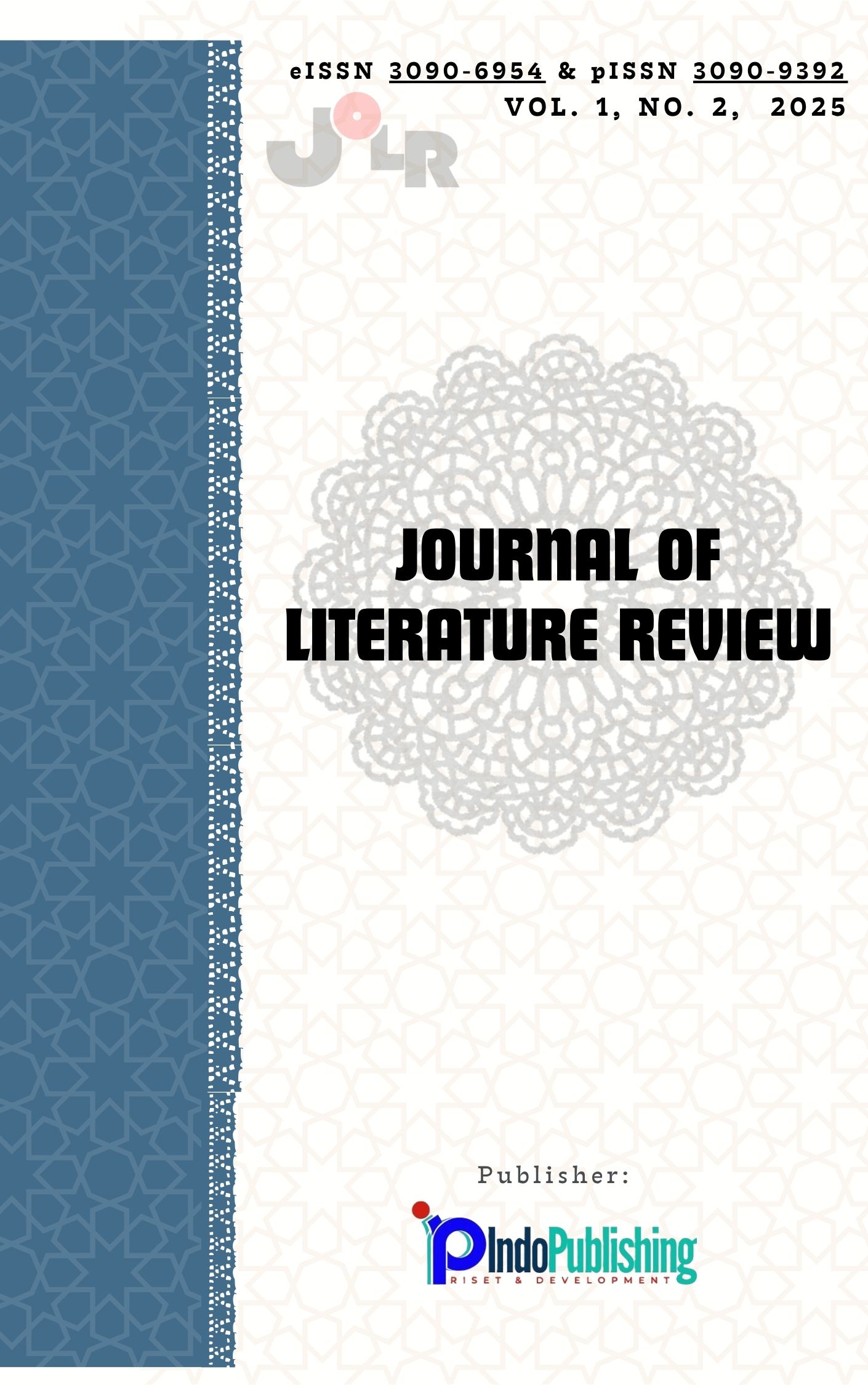Development of Waqf Accounting Research: A Systematic Literature Review
DOI:
https://doi.org/10.63822/e45sc513Keywords:
Waqf Accounting, Reporting System, Accountability, Systematic Literature ReviewAbstract
The objective of this research is to investigate the evolution of scholarly inquiries pertaining to waqf accounting through the application of a systematic literature review (SLR) methodology. A comprehensive assessment was conducted involving 58 scholarly articles published between the years 2000 and 2025, selected based on predetermined inclusion and exclusion parameters derived from the Scopus, Web of Science, and Google Scholar databases. The findings indicate a notable increase in scholarly engagement with the subject of waqf accounting over the past decade, particularly within Muslim-majority nations such as Malaysia and Indonesia. The predominant research themes encompass waqf financial reporting, the accountability of nadzir, supervisory mechanisms, and the incorporation of information technology within reporting frameworks. The majority of the studies employed a qualitative methodology, predominantly informed by theoretical frameworks such as Stakeholder Theory, Agency Theory, and Accountability Theory. Furthermore, contemporary research has begun to address issues related to the digitization of waqf accounting, particularly through the utilization of blockchain technology and smart contracts. Nevertheless, significant research gaps persist regarding the establishment of standardized reporting models and empirical investigations assessing the influence of waqf accounting on social welfare outcomes. This study advocates for the enhancement of regulatory frameworks, the augmentation of the institutional capabilities of nadzir, and the establishment of a technology-driven waqf financial reporting system. Additionally, there is a pressing need for advanced research characterized by quantitative, longitudinal, and interdisciplinary approaches to facilitate the promotion of accountable, transparent, and Sharia-compliant governance of waqf.
Downloads
References
Dhihan Arwin, N., Nawwar, F. A., & Br. Purba, V. (2024). Dampak psak 112 terhadap transparansi dan akuntabilitas lembaga wakaf. Jurnal El Rayyan: Jurnal Perbankan Syariah, 3(2), 149–160. https://doi.org/10.59342/jer.v3i2.645
Eliyanora, E., Ihsan, H., Afni, Z., & Ramadia, A. A. (2024). Bimbingan Teknis Penyusunan Laporan Keuangan Entitas Wakaf Berdasarkan PSAK 112 Pada Badan Pengelola Wakaf Ar Risalah. JAPEPAM, Jurnal Pengabdian Kepada Masyarakat, 3(1), 35–41. Retrieved from https://akuntansi.pnp.ac.id/japepam/index.php/japepam/article/view/37
Hudayat, A., Tohirin, A., Mohd-Sanusi, Z., & Achiria, S. (2020). Financial Reporting Practice Of Waqf Institutions In Selected Countries And Its Implications To Waqf Institutions In Indonesia. Al-Awqaf: Jurnal Wakaf Dan Ekonomi Islam, 10(Special), 135-144. https://doi.org/10.47411/al-awqaf.v10iSpecial.53
Khairani, E., & Illahi, I. (2023). Analysis of application of waqf accounting based on psak 112 at the wihdatul ummah batusangkar foundation. Fin Sinergy: Jurnal Manajemen Keuangan, 1(1), 43–54. https://doi.org/10.56457/fin.v1i1.411
Maesah,I., Senjiati,I.H., & Anshori,A.R. (2023). Analisis kendala penyajian laporan keuangan sesuai psak no. 112 pada nazhir wakaf. Jurnal Riset Ekonomi Syariah, 105–112. https://doi.org/10.29313/jres.v3i2.2806
Marsawal, S. H., Kara, M., & Bulutoding, L. (2021). Kajian psak 112 tentang akuntansi wakaf. ISAFIR: Islamic Accounting and Finance Review, 2(1), 21–33. https://doi.org/10.24252/isafir.v2i1.19856
Muflihah, R. (2023). Psak 112 sebagai penguatan akuntabilitas wakaf saham ke publik. La Zhulma | Jurnal Ekonomi dan Bisnis Islam, 2(1), 69–74. https://journal.iaitasik.ac.id/index.php/LaZhulma/article/view/118
Pertiwi, T. B., Harahap, R. D., Utami, D. S., Zaisa, K. A., & Ritonga, W. H. (2023). Penyajian laporan keuangan dan pernyataan standar akuntansi keuangan (Psak) syariah 112 pada lembaga badan wakaf cabang medan. Madani: Jurnal Ilmiah Multidisiplin, 1(6). https://doi.org/10.5281/zenodo.8174536
Pramewari,M.P., Mutiara,D., Azizah,S., & Aji,G. (2024). Mengkritisi implementasi standar akuntansi syariah dalam pengelolaan wakaf di era society 5. 0. Profit: Jurnal Manajemen, Bisnis dan Akuntansi, 3(3), 80–89. https://doi.org/10.58192/profit.v3i3.2175
Salman, K. R., Rithmaya, C. L., Mei Murni, N. S. I., Budiana, K. M., & Djunaedi, A. Z. (2021). PEMBERDAYAAN NAZHIR MELALUI PERANCANGAN SISTEM AKUNTANSI WAKAF. Jurnal KeDayMas: Kemitraan Dan Pemberdayaan Masyarakat, 1(1), 41–50. https://doi.org/10.14414/kedaymas.v1i1.2314
Senjiati, I. H., Siska Lis, & Itsnaina Lathifah. (2020). Pemulihan Aset Wakaf: Tinjauan Fikih dan Akuntansi. Hayula: Indonesian Journal of Multidisciplinary Islamic Studies, 4(2), 229–244. https://doi.org/10.21009/004.2.05
Shintiyawati,S. (2023). Analisa psak 112 tentang pengakuan, pengukuran, penyajian, serta pengungkapan aset wakaf. Jurnal Riset Perbankan Syariah, 103–108. https://doi.org/10.29313/jrps.v2i2.2877
Suci, F. S., & Waluyo, B. (2024). Akuntabilitas dan Transparansi Akuntansi Wakaf: Kajian terhadap Praktik Penyusunan Laporan Keuangan oleh Yayasan Al Ihsan Permata Depok Depok. Simposium Nasional Akuntansi Vokasi (SNAV) XII, 12(1), 232–248. Retrieved from https://ocs.polije.ac.id/index.php/psnav/article/view/25
Tania, A. L. (2023). Analisis kesesuaian pencatatan wakaf terhadap psak syariah nomor 112 studi kasus di pondok pesantren roudhotul qur’an. SUSTAINABLE, 3(1), 1. https://doi.org/10.30651/stb.v3i1.14283
Wilantini, C., Handayani, S., & Abidin, Z. (2023). Accountability analysis with the application of psak 112 in the financial statements of cash waqf in madura. Perisai : Islamic Banking and Finance Journal, 7(1), 17–35. https://doi.org/10.21070/perisai.v7i1.1641
Downloads
Published
Issue
Section
License
Copyright (c) 2025 Wali Saputra (Author)

This work is licensed under a Creative Commons Attribution-NonCommercial-ShareAlike 4.0 International License.



